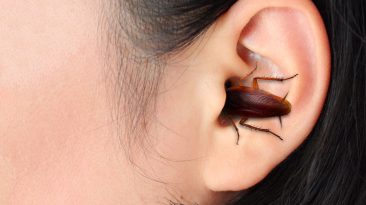It’s been a hard day. Your muscles are sore, and you’re stressed. You change into your bathing suit and slide into the bubbling water of a hot tub. Ooh, that feels so good. The jets massage you, and all your troubles seem to disappear. But could you have too much of a good thing? Soaking in hot water can be a relaxing and soothing experience. But, as with most things, you need to be careful. What health benefits can you get from sitting in a hot tub? How long can you soak? What dangers could there be?
BENEFITS
Hot tubs can reach a temperature of 40 °C (104 °F). The heat and jets reduce physical, emotional and mental stress. Add in some soft music and low lighting, and you could have a moment of perfect bliss. As you soak, the water soothes your tense muscles reducing aches and pains. The heat will increase your heart rate, opening up your blood vessels and lowering your blood pressure. These relaxing effects can contribute to a more peaceful sleep. If you have arthritis, being in hot water will reduce inflammation and stiffness, helping to reduce pain in your joints. Taking a regular dip in hot water can increase your insulin sensitivity and reduce the symptoms of diabetes. Soaking waist-high in a hot bath for an hour can burn the same amount of calories as a 30-minute walk. But we don’t recommend staying in that long.
HYPERTHERMIA
What is a safe amount of time to spend in the hot tub? Well, that depends on what the temperature is.If you set the hot tub to the maximum of 40 °C (104 °F), you can stay in for 15 minutes. You can extend that to 30 minutes if the temperature is 35 °C to 38 °C (95 °F to 100 °F). If you stay in the water longer than you should, your core body temperature could rise too high. If this happens, your heart will beat faster and become overworked due to your dropping blood pressure. You’ll feel like you’re suffering from a fever. Your skin will tingle and feel itchy. You’ll also be dizzy with a headache and sweating way too much. All that sweating will make you dehydrated. It will disorientate you, and you could slip and fall exiting the hot tub. And if you don’t get out, you could lose consciousness and drown. But overheating isn’t the only thing you need to be careful about
INFECTION
It’s important to properly maintain your hot tub to avoid exposure to viruses and bacteria. Regularly cleaning the water and ensuring proper ph, alkaline and chemical levels will prevent bacteria from growing. Otherwise, you could become infected with Legionnaire’s disease, pseudomonas or norovirus. If you contract Legionnaire’s, you’ll have a high fever, aches and shortness of breath. And you could die. In 1999, four people died after contracting the disease from a hot tub on display at a trade show in Belgium. Both pseudomonas bacteria and norovirus will cause diarrhea, vomiting and stomach cramps. The symptoms will appear a couple of days after exposure. Between 2000 and 2014, outbreaks linked to treated pools or hot tubs caused 27,000 infections and eight deaths in the United States.
HOT TUB SAFETY
Drink plenty of water before going into the hot tub to avoid dehydration. And don’t take drugs or drink alcohol before or during use. If possible, don’t soak by yourself. It’s always best to have a buddy there in case one of you have problems. But you’ve taken all the necessary precautions, so relax and enjoy. Just remember not to stay in too long.
Sources
- 7 Benefits of Soaking in a Hot Tub. Pietrangelo, A (2020). Healthline.
- Hot Tubs: How Safe Are They? Watson, S (2021). WebMd.
- Warning over the hot tubs that can kill. Browne, A (1999). The Guardian
- Passive heat therapy improves endothelial function, arterial stiffness and blood pressure in sedentary humans. Brunt, V E et al (2016). National Library of Medicine.
- Effect of hydrotherapy on quality of life, functional capacity and sleep quality in patients with fibromyalgia. Silva, KMOM et al (2012). National Library of Medicine.

















